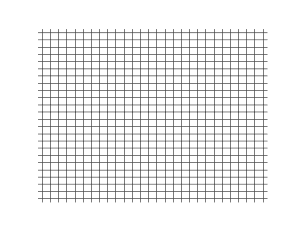Loading AI tools
Type of seismic wave From Wikipedia, the free encyclopedia
A P wave (primary wave or pressure wave) is one of the two main types of elastic body waves, called seismic waves in seismology. P waves travel faster than other seismic waves and hence are the first signal from an earthquake to arrive at any affected location or at a seismograph. P waves may be transmitted through gases, liquids, or solids.


The name P wave can stand for either pressure wave (as it is formed from alternating compressions and rarefactions) or primary wave (as it has high velocity and is therefore the first wave to be recorded by a seismograph).[1] The name S wave represents another seismic wave propagation mode, standing for secondary or shear wave, a usually more destructive wave than the primary wave.

Primary and secondary waves are body waves that travel within the Earth. The motion and behavior of both P and S waves in the Earth are monitored to probe the interior structure of the Earth. Discontinuities in velocity as a function of depth are indicative of changes in phase or composition. Differences in arrival times of waves originating in a seismic event like an earthquake as a result of waves taking different paths allow mapping of the Earth's inner structure.[3][4]
Almost all the information available on the structure of the Earth's deep interior is derived from observations of the travel times, reflections, refractions and phase transitions of seismic body waves, or normal modes. P waves travel through the fluid layers of the Earth's interior, and yet they are refracted slightly when they pass through the transition between the semisolid mantle and the liquid outer core. As a result, there is a P wave "shadow zone" between 103° and 142°[5] from the earthquake's focus, where the initial P waves are not registered on seismometers. In contrast, S waves do not travel through liquids.
Advance earthquake warning is possible by detecting the nondestructive primary waves that travel more quickly through the Earth's crust than do the destructive secondary and Rayleigh waves.
The amount of warning depends on the delay between the arrival of the P wave and other destructive waves, generally on the order of seconds up to about 60 to 90 seconds for deep, distant, large quakes such as the 2011 Tohoku earthquake. The effectiveness of a warning depends on accurate detection of the P waves and rejection of ground vibrations caused by local activity (such as trucks or construction). Earthquake early warning systems can be automated to allow for immediate safety actions, such as issuing alerts, stopping elevators at the nearest floors, and switching off utilities.
In isotropic and homogeneous solids, a P wave travels in a straight line longitudinally; thus, the particles in the solid vibrate along the axis of propagation (the direction of motion) of the wave energy. The velocity of P waves in that kind of medium is given by where K is the bulk modulus (the modulus of incompressibility), μ is the shear modulus (modulus of rigidity, sometimes denoted as G and also called the second Lamé parameter), ρ is the density of the material through which the wave propagates, and λ is the first Lamé parameter.
In typical situations in the interior of the Earth, the density ρ usually varies much less than K or μ, so the velocity is mostly "controlled" by these two parameters.
The elastic moduli P wave modulus, , is defined so that and thereby
Typical values for P wave velocity in earthquakes are in the range 5 to 8 km/s. The precise speed varies according to the region of the Earth's interior, from less than 6 km/s in the Earth's crust to 13.5 km/s in the lower mantle, and 11 km/s through the inner core.[6]
| Rock Type | Velocity [m/s] | Velocity [ft/s] |
|---|---|---|
| Unconsolidated Sandstone | 4,600–5,200 | 15,000–17,000 |
| Consolidated Sandstone | 5,800 | 19,000 |
| Shale | 1,800–4,900 | 6,000–16,000 |
| Limestone | 5,800–6,400 | 19,000–21,000 |
| Dolomite | 6,400–7,300 | 21,000–24,000 |
| Anhydrite | 6,100 | 20,000 |
| Granite | 5,800–6,100 | 19,000–20,000 |
| Gabbro | 7,200 | 23,600 |
Geologist Francis Birch discovered a relationship between the velocity of P waves and the density of the material the waves are traveling in: which later became known as Birch's law. (The symbol a() is an empirically tabulated function, and b is a constant.)
Seamless Wikipedia browsing. On steroids.
Every time you click a link to Wikipedia, Wiktionary or Wikiquote in your browser's search results, it will show the modern Wikiwand interface.
Wikiwand extension is a five stars, simple, with minimum permission required to keep your browsing private, safe and transparent.